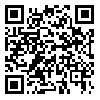Volume 7, Issue 13 (2020)
QHTS 2020, 7(13): 163-206 |
Back to browse issues page
Download citation:
BibTeX | RIS | EndNote | Medlars | ProCite | Reference Manager | RefWorks
Send citation to:



BibTeX | RIS | EndNote | Medlars | ProCite | Reference Manager | RefWorks
Send citation to:
Sayadani A, heydarpour Y. Translatorial Action Models in Translating Nahj al-Balagha based on Skopos Theory (Case Study: Bahrampour’s Translation of Nahj al-Balagha). QHTS 2020; 7 (13) :163-206
URL: http://qhts.modares.ac.ir/article-10-38500-en.html
URL: http://qhts.modares.ac.ir/article-10-38500-en.html
1- Azarbaijan Shahid Madani University , a.sayadani@azaruniv.ac.ir
2- Azarbaijan Shahid Madani University
2- Azarbaijan Shahid Madani University
Abstract: (3861 Views)
One of the most important functional theories to translation studies was Skopos theory introduced by Hans Vermeer in the late1970s. The theory in contrary to other translation theories that were based on linguistics, focused on the function on text. Vermeer clarifies the main concepts of the theory, considering adequacy of text, and using and discussing equivalence, coherence and cohesion, culture and cultural items in translation, functional analysis of text, and the main features that influence the creation and understanding of a text (expressive, vocative and informative features). Nahj al-Balagha is one of the most remarkable examples abundant with different figures of speech such as similes, tropes, metonymies, and conceptual metaphors. The translation of most of the figures and elements can be well explored within the framework of the Skopos theory. These are investigated in Bahrampour’s translation of Nahj al-Balagha (2017). The study tried to analytically and descriptively compare the main text and the translation within the framework of Skopos theory. The study showed that Bahrampour has tried to, in addition to explicating the main ideas, translate the specific concepts and aspects according to the function of target text.
Keywords: Translatorial Action Models, Skopos Theory, Vermeer, Nahj al-Balagha, Bahrampour’s Translation of Nahj al-Balagha
Article Type: مقالات علمی پژوهشی |
Subject:
Arts and Humanities (General)
Received: 2019/11/26 | Accepted: 2020/03/13 | Published: 2020/09/12
Received: 2019/11/26 | Accepted: 2020/03/13 | Published: 2020/09/12
Send email to the article author
| Rights and permissions | |
 |
This work is licensed under a Creative Commons Attribution-NonCommercial 4.0 International License. |







